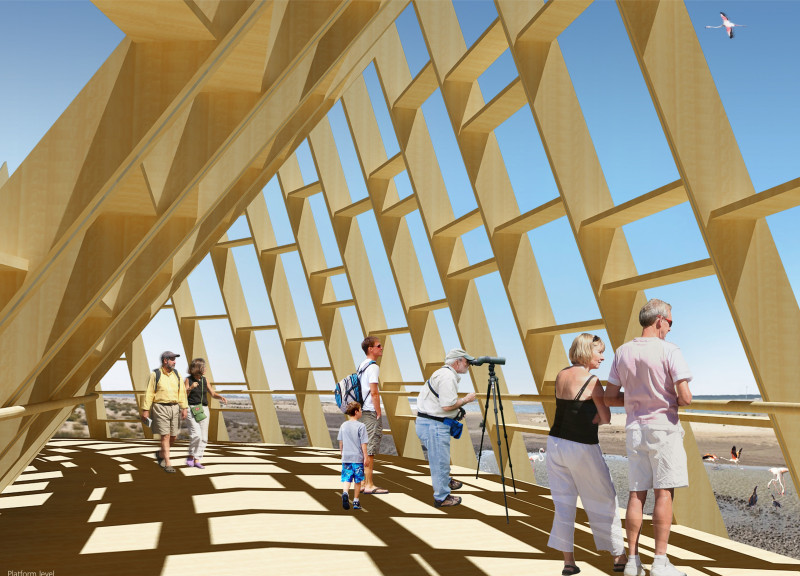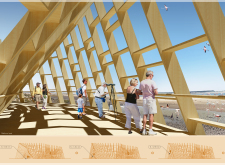5 key facts about this project
"Footsteps in the Sand" is located in the Al Wathba Wetland Reserve. The design focuses on how visitors interact with the desert landscape through a series of pathways. At the center of this project is an observation tower that leads to a commanding view of the surrounding dunes and wetland. The concept emphasizes the connection between the natural environment and human experience.
Observation Tower Design
The observation tower has a gradual rise from the ground, allowing for a smooth transition for those moving through the space. As visitors walk toward the tower, they engage with the land around them. The design encourages exploration and curiosity, giving a sense of movement that mimics walking over sand dunes. It acts as both a structure and a landscape feature.
Structural Configuration
The architecture employs a method based on assembling parts. Main components are made from flitch-engineered members, which combine steel plates between layered teak wood. This combination provides strength while ensuring an appealing appearance. Teak wood is chosen for its durability, which is vital in a harsh desert setting. The material selection reflects a practical understanding of the demands posed by the climate.
Functional Elements
Horizontal louvers are integrated into the design. They provide stability by resisting winds while also creating shaded areas along the walkway. This balance between functionality and comfort is evident throughout the tower. Though they serve different purposes, these features work together to enhance the user's experience in the structure.
Access and Interaction
Boardwalks made from pressure-treated wood guide visitors over delicate wetland areas. This thoughtful design choice allows for exploration while protecting the natural environment. It shows a commitment to responsible interaction with the landscape. The careful arrangement of these pathways reinforces the aim of connecting visitors with the surrounding beauty.
As people reach the observation platform, they gain a new perspective of the wetlands. The elevation provides an opportunity to reflect on the relationship between the built environment and the natural world, enhancing the overall experience of being in this unique landscape.





















































